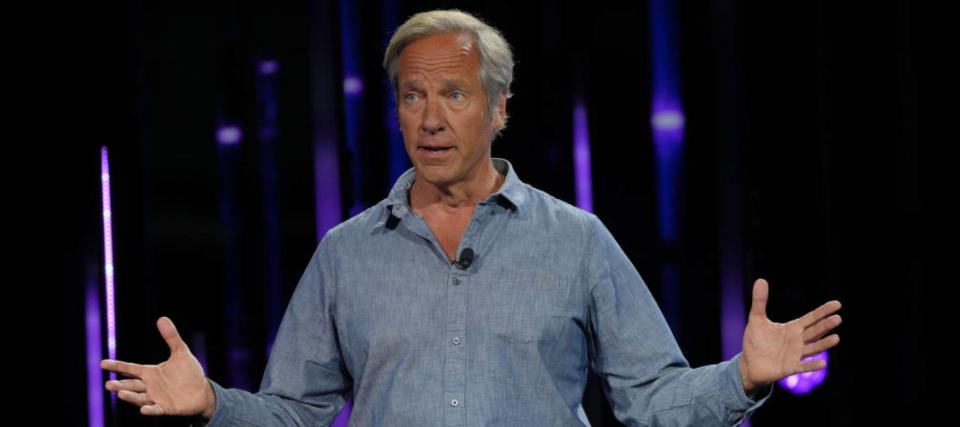Mike Rowe cautions that 7 million American men are ‘done’ looking for work and have ‘punched out’ — here’s why that’s a serious problem

Men have been steadily clocking out of the American workforce since pre-pandemic times — even now despite there being millions of job openings and an uncertain economic climate.
While the U.S. labor market remains incredibly tight — with the economy adding another 263,000 jobs in November — around 7 million “prime age” men between the ages of 25 and 54 are reportedly sitting it out.
“They are affirmatively not looking for work. They have already punched out. They’re done,” TV host Mike Rowe said on The Brian Kilmeade Show, citing research from economist Nick Eberstadt.
“So what’s really happening in the country now that scares me right to my core fundamentally is that we’ve never had so much unrealized opportunity and so little enthusiasm for it.”
Don’t miss
Why is the workforce participation rate declining?
Eberstadt first noted the decline in the number of men with jobs in his 2016 book, Men Without Work — a trend he says was exacerbated during the COVID-19 pandemic. While plenty of workers were laid off or left due to illness, not all of them returned to the labor force — even after job openings picked up.
The Minneapolis Federal Reserve Bank also found that 25% of prime age Americans aren’t currently working — and while some say they’re looking for jobs, but can’t find any, others are actively choosing not to join the job hunt. This report identifies reasons such as caregiving for an elderly parent or child, health-related issues, retiring early, going back to school, or joining the military.
The U.S. Chamber of Commerce surveyed Americans who lost their jobs during the pandemic and about a quarter said federal aid incentivized them to not actively look for work, while about half aren’t willing to take jobs that don’t offer the option of remote work. More than a third (33%) of the younger respondents stated that they were prioritizing personal growth and learning new skills in order to re-enter the labor market.
There’s a growing gender gap
Eberstadt says a vast majority of these prime-age men spend around 2,000 hours a year on screens, do little housework and don’t spend time volunteering. There may be more to the story that men just slacking off at home.
Partially, the decline in men working in the workforce could be due to the automation of manufacturing jobs or the move offshore.
Continue reading: 10 best investing apps for ‘once-in-a-generation’ opportunities (even if you’re a beginner)
Research also shows that women are more inclined to get four-year college degrees than men. This is because postsecondary education often has better employment prospects. Women account for more than half of America’s college educated workforce, according to the Pew Research Center.
The participation rate of college-educated females in the labor force is the same as it was before the pandemic. However, the proportion of college-educated men actively looking for work or actively searching for it has decreased.
This is why this is a problem
Rowe calls the decline in male participation in the workforce “the most chilling metric of all” since it’s “an indication of what’s to come.”
Reduced labor force participation has already taken its toll on lower-paying industries — the leisure and hospitality sector has seen the highest quit rate since July 2021, and retail isn’t far behind, reports the Chamber of Commerce.
The shortage of skilled workers is affecting durable goods manufacturing, wholesale and retailer trade, education and health services, and other sectors such as retail trade and wholesale and retail.
This allows you to: more pressure on the remaining employeesPeople who work longer hours, have more responsibilities, and are likely to be exhausted.
“Running your workers like this — asking them to do 20%, 30% more because you’re short staffed — it’s very much a short-term strategy. You’re going to keep losing people,” Paige Ouimet, a professor at the University of North Carolina’s Kenan-Flagler Business School, told The Washington Post.
Some employers, like restaurants and airlines, are reportedly offering higher wages, although economists say this could be contributing toward inflation — since higher labor costs can drive up prices.
“The U.S. labor shortage will probably have to be solved by some combination of immigration, automation and recession,” writes Eberstadt in an op-ed for The Washington Post, but adds this is “far from likely to reduce popular angst and discontent.”
Next, what to read
-
Americans are paying nearly 40% more on home insurance compared to 12 years ago — here’s how to spend less on peace of mind
-
‘Hold onto your money’: Jeff Bezos says you might want to rethink buying a ‘new automobile, refrigerator, or whatever’ — here are 3 better recession-proof buys
-
Here’s how much the average American 60-year-old holds in retirement savings — how does your nest egg compare?
This article does not constitute advice and is intended to provide information only. It is not a warranty.